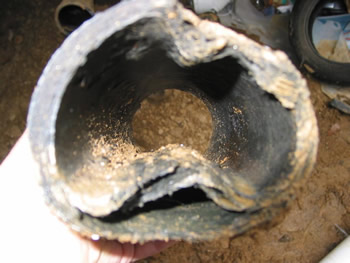
Lakefront property owners in Lake Oswego are pretty comfortable overall with the knowledge that the lake is managed and dammed, and so concerns regarding rising water during heavy rains etc are not prevalent. The lake is owned and managed by the Lake Oswego Corporation (LOC), a local entity to which lakefront residents establish membership and pay dues. Every few years the lake is drained for a few months to allow residents to clean and repair boat docks along the lake and canals, and generally speaking, it is understood that the lake is a controlled body of water. Even so, in the flood of 1996, water did spill over in some areas because it was not able to be released quickly enough at the dam to compensate for the heavy inflow.

FEMA recently completed a study of the Lake Oswego area and has determined that it will change the flood zone designation for properties on the lake, as well as properties surrounding the canals, Tualatin River, and Spring Creek. The maps for the 100-year flood zone have been altered, and are available for viewing at www.ci.oswego.or.us/plan. The city’s website states: “Text amendments are intended to comply with FEMA’s regulations so that the City can retain eligibility for participation in the National Flood Insurance Program.”
Lake Oswego must be compliant with FEMA’s requirements in order for Lake Oswego residents to be able to take advantage of their flood insurance policies in the event of a natural disaster. Lake Oswego property owners, especially those near the lake, would be well advised to double-check their property’s location on these new maps and its relation to the new flood zones, as they may be required to carry flood insurance now, even though that was not the case when the property was purchased.
 According to Kelley Woodwick at Chicago Title, there is good news for sellers, in that flood insurance contracts may be transferred to new buyers at grandfathered rates and zones. Again, check the city’s new maps before June 18th to acquire information on the grandfathered areas… after the 18th, I am told that the information will most likely be removed from the website.
According to Kelley Woodwick at Chicago Title, there is good news for sellers, in that flood insurance contracts may be transferred to new buyers at grandfathered rates and zones. Again, check the city’s new maps before June 18th to acquire information on the grandfathered areas… after the 18th, I am told that the information will most likely be removed from the website.
There are also new regulations resulting, including elevation requirements for remodeling and new construction. Significant remodeling jobs now require that the structure be at 104.5 ft elevation as compared to the old standard of 103.5 ft. New construction after June 18, 2008 will also be required to meet a 104.5 ft elevation requirement.
Checking with the City of Lake Oswego is always a good idea, and much information can be found at their website (above). Stay informed, stay protected, and stay dry!

 For most of the 20th century, oil heat was the primary method of heating homes. If you own or are considering purchasing a home that was built before 1965, chances are pretty good that the house had oil heat. And chances are also pretty good that the oil tank was buried in the ground.
For most of the 20th century, oil heat was the primary method of heating homes. If you own or are considering purchasing a home that was built before 1965, chances are pretty good that the house had oil heat. And chances are also pretty good that the oil tank was buried in the ground. On a recent Broker’s Tour in Lake Oswego, my cohorts and I were discussing how important it is to include accurate information in listings, and we noted how easy it is to inadvertently choose the wrong “field” when entering data etc. I thought it might help the prospective home seller or buyer to know a little about how agents search for houses, specifically in using the basic search fields provided to them on the MLS.
On a recent Broker’s Tour in Lake Oswego, my cohorts and I were discussing how important it is to include accurate information in listings, and we noted how easy it is to inadvertently choose the wrong “field” when entering data etc. I thought it might help the prospective home seller or buyer to know a little about how agents search for houses, specifically in using the basic search fields provided to them on the MLS. If you prefer a newer home, but also want a big back yard, then you will find yourself in a quandary. There are new houses, and there are large lots, but they just don’t seem to be found together. What’s up with that?
If you prefer a newer home, but also want a big back yard, then you will find yourself in a quandary. There are new houses, and there are large lots, but they just don’t seem to be found together. What’s up with that? Lake Oswego is known to be a community with very expensive homes. Lake front, river front, city views, mountain views, you can find some pretty special amenities here that do drive up the value of a home. So, yes, there are million dollar mansions in Lake Oswego. But does that mean that there are not any less expensive homes? No. In fact, I am of the opinion that the community is often over-looked by buyers because they make the assumption that there is nothing for sale in Lake Oswego that they can afford. So here is a quick moment of enlightenment to be shared: Lake Oswego has affordable houses.
Lake Oswego is known to be a community with very expensive homes. Lake front, river front, city views, mountain views, you can find some pretty special amenities here that do drive up the value of a home. So, yes, there are million dollar mansions in Lake Oswego. But does that mean that there are not any less expensive homes? No. In fact, I am of the opinion that the community is often over-looked by buyers because they make the assumption that there is nothing for sale in Lake Oswego that they can afford. So here is a quick moment of enlightenment to be shared: Lake Oswego has affordable houses. The Fibre Conduit Company of Orangeburg, N.Y. was a major manufacturer of this kind of pipe, and with its widespread use, changed its name to the Orangeburg Pipe Co. — thus the common name of the product. If your home was built during this period, there is a good chance that you have this kind of sewer pipe lurking underground, so it is good to know what this could mean to you as either a homeowner, or someone contemplating a purchase.
The Fibre Conduit Company of Orangeburg, N.Y. was a major manufacturer of this kind of pipe, and with its widespread use, changed its name to the Orangeburg Pipe Co. — thus the common name of the product. If your home was built during this period, there is a good chance that you have this kind of sewer pipe lurking underground, so it is good to know what this could mean to you as either a homeowner, or someone contemplating a purchase. Yes, you should be concerned.
Yes, you should be concerned.